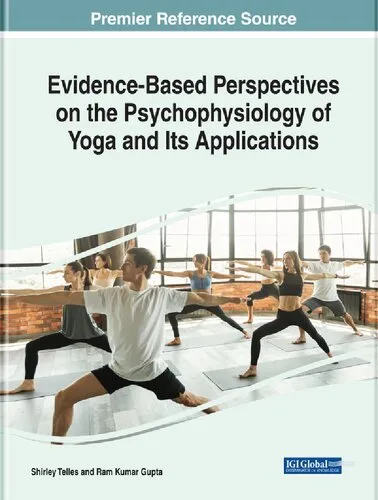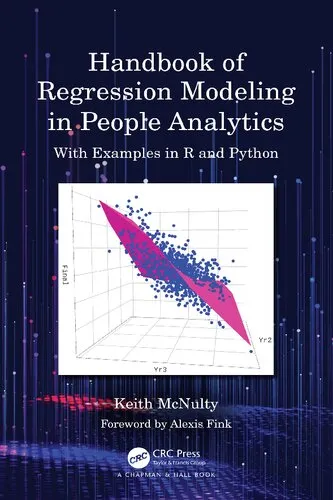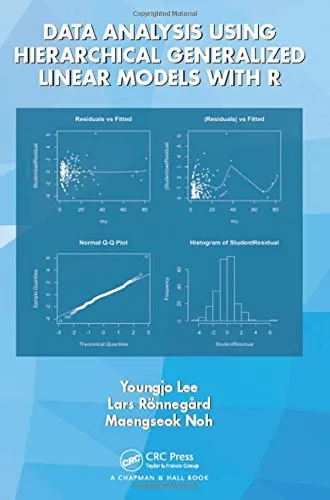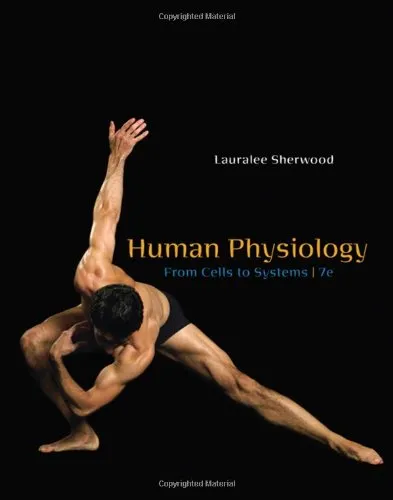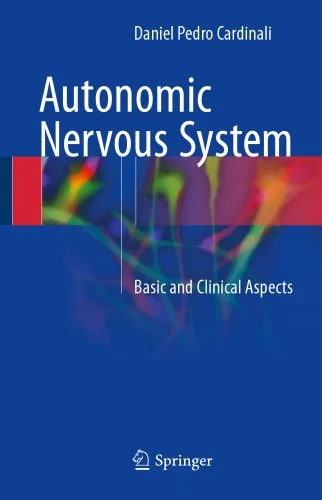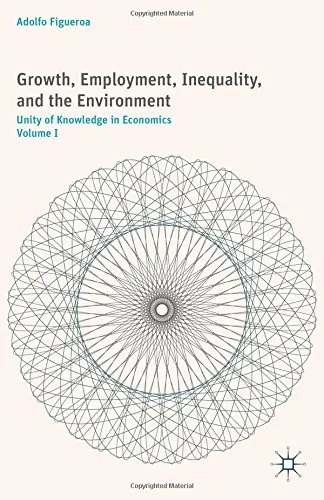Handbook of Research on Evidence-Based Perspectives on the Psychophysiology of Yoga and Its Applications
4.8
بر اساس نظر کاربران

شما میتونید سوالاتتون در باره کتاب رو از هوش مصنوعیش بعد از ورود بپرسید
هر دانلود یا پرسش از هوش مصنوعی 2 امتیاز لازم دارد، برای بدست آوردن امتیاز رایگان، به صفحه ی راهنمای امتیازات سر بزنید و یک سری کار ارزشمند انجام بدینکتاب های مرتبط:
خلاصه تحلیلی کتاب
کتاب Handbook of Research on Evidence-Based Perspectives on the Psychophysiology of Yoga and Its Applications اثری پژوهشی و تخصصی است که به بررسی دقیق ارتباط میان تمرینهای یوگا و فرآیندهای روانفیزیولوژیک بدن انسان میپردازد. در این اثر، نویسندگان با رویکردی مبتنی بر شواهد علمی، مجموعهای از پژوهشها، روشهای تحلیلی و نتایج مطالعات معتبر را گردآوری کردهاند تا پل ارتباطی میان سنتهای کهن یوگا و یافتههای علمی مدرن ایجاد کنند.
تمرکز کتاب بر این نکته است که یوگا تنها یک فعالیت جسمانی یا روحی نیست؛ بلکه فرایندی چندلایه با اثرات مستقیم بر سیستم عصبی خودمختار، فعالیتهای مغزی، سطح هورمونها و واکنشهای فیزیولوژیک به استرس محسوب میشود. این دیدگاه علمی باعث میشود مخاطبان دانشگاهی و حرفهای بتوانند از یافتههای کتاب برای طراحی برنامههای درمانی و بهبود کیفیت زندگی بهرهبرداری کنند.
از ویژگیهای برجسته این اثر، تکیه بر مقالات معتبر منتشر شده در نشریات علمی بینالمللی و ترکیب آنها با تحلیلهای کاربردی است. نویسندگان با پرهیز از ادعاهای غیرمستند، صرفاً دادههایی را مطرح کردهاند که پشتوانه علمی قابلاعتنا دارند.
نکات کلیدی و کاربردی
یکی از نکات اساسی کتاب این است که تمرینهای یوگا میتوانند بهطور مثبت بر شاخصهای روانفیزیولوژیک اثرگذار باشند. برای مثال، کاهش ضربان قلب در وضعیت استراحت، بهبود شاخصهای تنفس و افزایش فعالیت امواج مغزی مرتبط با آرامش ذهنی از جمله این اثرات هستند.
محققان تأکید میکنند که هر چه طراحی برنامههای یوگا مبتنی بر دادهها و شواهد علمی باشد، کارایی آن در حوزههای بالینی و توانبخشی بیشتر میشود. این رویکرد کاربردی میتواند بهعنوان یک ابزار مکمل در درمان اضطراب، افسردگی و فشار خون بالا مورد استفاده قرار گیرد.
از منظر آموزشی، کتاب به خوانندگان نشان میدهد که چگونه میتوان فرآیند ارزیابی اثرات یوگا را با استفاده از ابزارهای روانفیزیولوژیک مانند EEG، HRV و آزمونهای هورمونی پیش برد. این موضوع برای کسانی که قصد طراحی مطالعههای علمی دارند، ارزش عملی بسیار بالایی دارد.
نقلقولهای ماندگار
در طی مطالعه کتاب، جملات الهامبخشی از نویسندگان یا پژوهشگران نقل شده است که بهخوبی پیام اصلی اثر را منتقل میکنند.
یوگا پلی میان سنت و علم است؛ جایی که تجربه شخصی با دادههای عینی گره میخورد. نامشخص
روانفیزیولوژی یوگا، علمی است که میتواند مسیر مراقبتهای بهداشتی را متحول کند. نامشخص
چرا این کتاب اهمیت دارد
اهمیت این کتاب از دو جنبه قابل بررسی است: نخست، تخصصی بودن و جامعیت محتوا که به پژوهشگران، درمانگران و مربیان یوگا امکان میدهد بر پایه دانش علمی به کار خود عمق ببخشند. دوم، ایجاد یک زبان مشترک میان حوزههای سنتی و علمی که مانع از گسست میان تجربیات انسانی و یافتههای مدرن میشود.
در دنیای امروز که نیاز به روشهای غیرتهاجمی برای ارتقاء سلامت رو به فزونی است، کتاب حاضر مسیر علمی و مبتنی بر شواهد را پیشنهاد میدهد که میتواند بهعنوان مرجع اصلی مورد استفاده قرار گیرد. وجود مباحث جامع درباره روششناسی، ارزیابیهای علمی و مداخلات عملی، این اثر را به یک منبع مطالعاتی ارزشمند تبدیل کرده است.
نتیجهگیری الهامبخش
کتاب Handbook of Research on Evidence-Based Perspectives on the Psychophysiology of Yoga and Its Applications نهتنها برای دانشجویان و پژوهشگران بلکه برای مربیان و درمانگران یوگا نیز منبعی راه
Analytical Summary
The Handbook of Research on Evidence-Based Perspectives on the Psychophysiology of Yoga and Its Applications is a comprehensive academic contribution that delves into the neurophysiological, psychological, and therapeutic dimensions of yoga, grounded in rigorous scientific inquiry. This work is carefully curated to offer a multidisciplinary outlook, suitable for scholars, clinical practitioners, and professionals who aim to understand the measurable impacts of yoga on the human mind and body.
Bringing together the expertise of editors Shirley Telles and Ram Kumar Gupta, the book synthesizes peer-reviewed studies and experimental data to offer a clear picture of how yoga's psychophysiology operates. Whether exploring changes at the autonomic nervous system level, cognitive performance, emotional regulation, or musculoskeletal health, the text presents a thorough narrative supported by empirical evidence.
Secondary themes such as yoga science research and mind-body health are intelligently woven throughout, ensuring the reader gains both a macro and micro perspective on the field. Each chapter emphasizes the importance of methodological rigor, offering critique as well as synthesis—making it invaluable for academic citation and curriculum development.
Key Takeaways
This handbook delivers both breadth and depth in its coverage of yoga's psychophysiological effects, offering practical insights backed by scholarly validation.
Readers will recognize recurrent empirical findings that support yoga as a complementary approach to mental health and physical wellness.
Its structured chapters allow swift identification of key research areas, from neuroendocrine responses to yoga interventions, to investigations into long-term practice and improved quality of life indices.
The content is designed to inspire further research, policy-making, and clinical application in contexts ranging from rehabilitation centers to educational settings.
Memorable Quotes
“Yoga provides a unique bridge between ancient wisdom and modern science, measured through the lens of psychophysiology.”Unknown
“Evidence-based inquiry into yoga’s effects is essential to integrating it into mainstream healthcare.”Unknown
“A commitment to methodological rigor ensures that yoga research contributes meaningfully to scientific discourse.”Unknown
Why This Book Matters
In a landscape often dominated by anecdotal claims, this handbook stands out as a meticulously assembled resource prioritizing evidence-based perspectives.
It addresses critical gaps in literature by documenting yoga's psychophysiological impact through both quantitative and qualitative methodologies. For academics, it offers an indispensable reference point; for clinicians, it presents scientifically supported interventions; and for policy-makers, it outlines potential avenues for health promotion.
Information unavailable regarding awards or recognitions—no reliable public source verifies such distinctions—however, its scholarly precision suggests high value in academic and professional circles.
By integrating global research patterns, the editors encourage cross-cultural and interdisciplinary dialogue, crucial for advancing both yoga practice and scientific understanding.
Inspiring Conclusion
The Handbook of Research on Evidence-Based Perspectives on the Psychophysiology of Yoga and Its Applications invites serious readers to engage deeply with verified scientific knowledge, bridging tradition with contemporary empirical validation.
By bringing together well-designed studies, critical analyses, and practical implications, the book crafts a roadmap for future research and informed practice. Whether you are pursuing an academic degree, refining clinical protocols, or expanding public health strategies, its contributions will catalyze thoughtful action.
This authoritative yet inviting resource challenges readers to not simply absorb information, but to share, discuss, and implement the insights gained—advancing both personal understanding and the broader field of mind-body health.
دانلود رایگان مستقیم
شما میتونید سوالاتتون در باره کتاب رو از هوش مصنوعیش بعد از ورود بپرسید
دسترسی به کتابها از طریق پلتفرمهای قانونی و کتابخانههای عمومی نه تنها از حقوق نویسندگان و ناشران حمایت میکند، بلکه به پایداری فرهنگ کتابخوانی نیز کمک میرساند. پیش از دانلود، لحظهای به بررسی این گزینهها فکر کنید.
این کتاب رو در پلتفرم های دیگه ببینید
WorldCat به شما کمک میکنه تا کتاب ها رو در کتابخانه های سراسر دنیا پیدا کنید
امتیازها، نظرات تخصصی و صحبت ها درباره کتاب را در Goodreads ببینید
کتابهای کمیاب یا دست دوم را در AbeBooks پیدا کنید و بخرید
1243
بازدید4.8
امتیاز0
نظر98%
رضایتنظرات:
4.8
بر اساس 0 نظر کاربران
Questions & Answers
Ask questions about this book or help others by answering
No questions yet. Be the first to ask!
